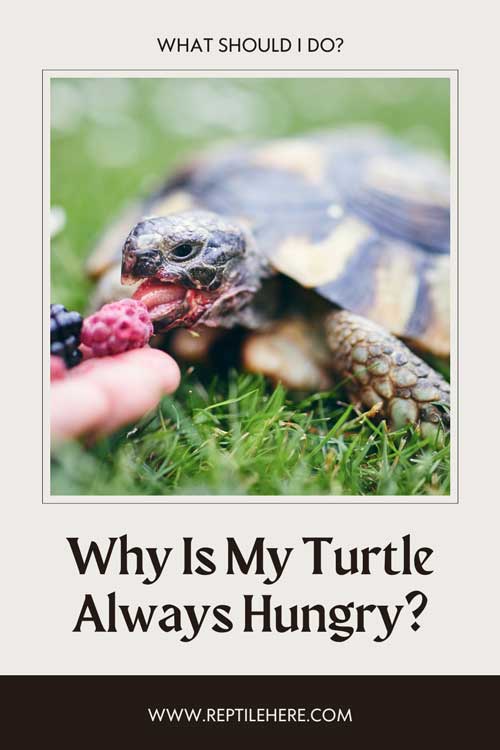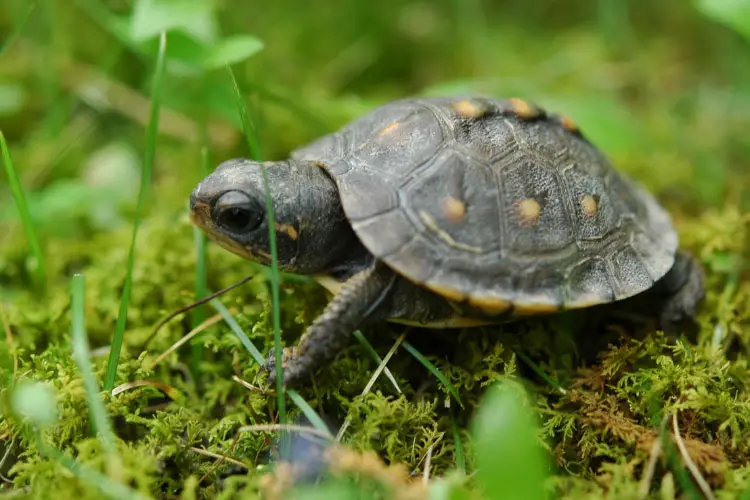Why Is My Turtle Always Hungry? What Should I do?
As a turtle owner, feeding your pet is sometimes the most engaging bonding activity. However, what happens if the pet is always hungry and looking for more treats? Given the enormous health risks of overfeeding the turtles, you might be uncertain whether to do their will or not.
So, why is my turtle always hungry? Turtles are exploitative pets when it comes to feeding. They don’t only feed because they’re hungry, but because food is presented to them. One remedy is ensuring your pet feeds on a balanced diet. Your turtle risks getting obese if overfed.
In some cases, turtles will relate your presence with treats and foodstuffs, and they’ll start to beg every time they see you. Read more to know several ways you can solve this habit and the risks if you entertain it.
Why Is My Pet Turtle Always Hungry?
Contents
In nature, it’s hard for turtles to find all the nutrients they require in one meal. This leads to a habit where they eat any food they can acquire in search of a balanced diet. If a wild turtle spots a potential prey, it hunts it immediately regardless if it’s full or not. They dislike missing chances because it’s unlikely for some opportunities to come by, a behavior captive turtles have adopted.
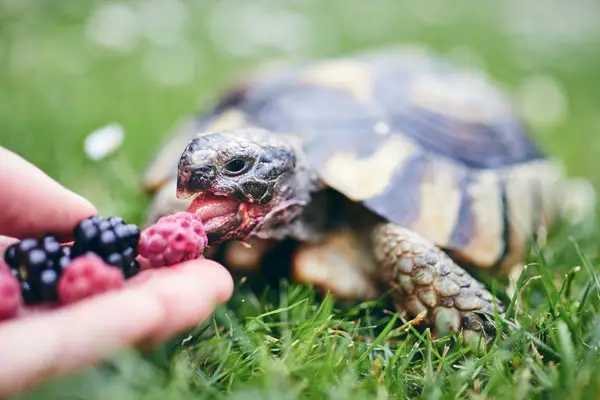
However, the foods you serve your pet turtle should have a balance of vegetables with no mineral deficiencies. If the diet doesn’t have all the nutrients the pet requires, it will be left craving. Feeder fish are a great source of calcium for turtles in captivity, one of the nutrients they require. Also, according to USDA, crude proteins should be 46.5 of all nutrition for a freshwater turtle and should be served.
What Should I Do If My Pet Is Always Hungry?
Your pet can act hungry for more than one reason. Therefore, it’s best to take action after eliminating every possible motive for this behavior.
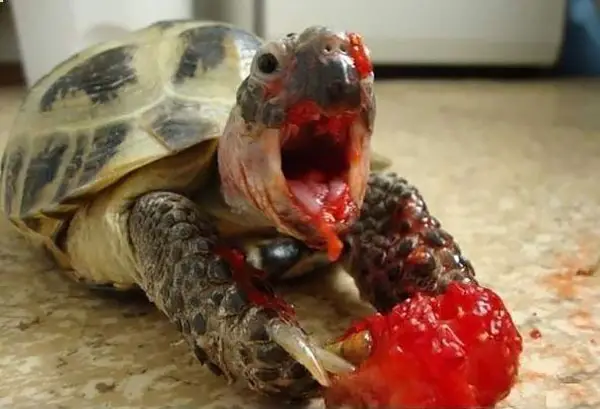
- Diet – If your pet appears hungry and you conclude it is due to nutritional deficiencies, serve it various foods. Calcium, proteins, and Vitamin A are some of the crucial nutrients which can be sourced from a variety of foods. Also, your pet might be requesting for clean water rather than food which you should differentiate.
- Feeding Frequency – In an article on the optimal feeding frequency of captive green turtles, it was deemed fit for turtles to eat twice a day. However, this is for baby turtles and younger ones who are still in the growing process.
- Quantity – You should also consider the amount of food they eat. Some people use a method where the turtle eats as many pellets as it can eat within 20 minutes. Others prefer a cup of commercial food or other diet foods as an individual turtle dinner.
Also read: Turtle Shell Broken And Bleeding?
What Are the Health Risks of Overfeeding My Turtle?
Your turtle is at risk of several health problems if you treat its natural behavior by providing it with more food. The first health risk your pet will likely face is obesity, a condition caused by several things, including overfeeding. Also, if your pet is overfed, its shell can experience a condition called shell pyramiding. This condition happens if their shell grows fast and the scutes appear on it.
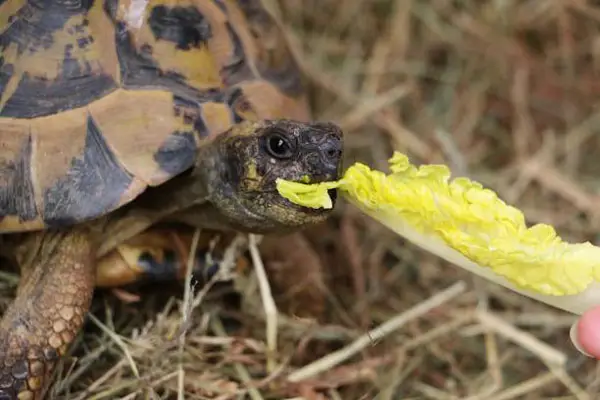
On the other hand, if the pet’s condition is due to nutritional deficiencies, it might develop several conditions like weak shells and bones from lack of calcium absorption. Hypovitaminosis A is the lack of vitamin A, a condition where the turtle gets inflamed eyelids and has difficulty breathing. Poor quality food can also lead to undergrowth for juvenile and adult turtles.
FAQ
As a pet owner, if your pet needs something, the first instinct is to provide it immediately. However, turtles seem needier than other pets, especially regarding feeding, a questionable habit. The following are some of the frequently asked questions on this topic and their answers.
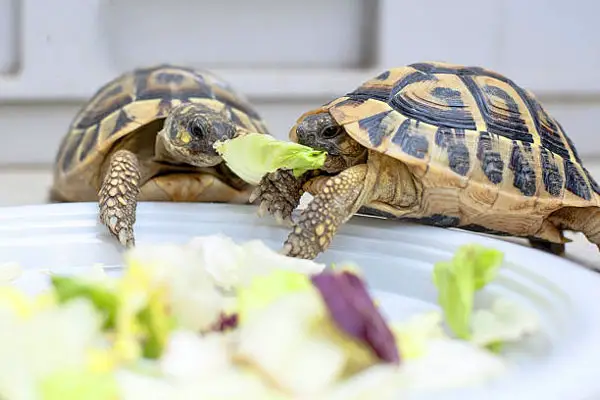
Turtle feeding routine and frequency are crucial for the healthy growth of your pet. In most cases, feeding your pet each day is best, especially when they are young and growing. In other times, pets can skip some days after feeding well on the previous one, a good method for maintaining weight. For this instance, your pet should take one cup of food or eat as much as it can within 20 minutes.
Since these pets are opportunistic feeders, it is sometimes hard to tell if they are hungry or just acting. The first way to know this is to try and identify the last time you fed them. If you served them their last meal within the same day, then they are not hungry and may not be in genuine need of more food. A genuinely hungry turtle will frequently visit its normal dinner plate and nearby areas, searching for food.
Juvenile turtles get hungry more often because their bodies are developing. You need to supplement their body with calcium and vitamins to aid proper development. Adult turtles, on the other hand, don’t become hungry often. Feeding them huge chunks of food every two days is enough.
Related: Turtle Bleeding From Mouth, Tail, Or Nose?
Outro
Turtles are great pets that many pet owners find pressure rearing. They are not demanding pets and can live with other pets in the same aquarium. Healthy turtles only require you to provide basic needs and a balanced diet for a comfortable life.
However, these pets will sometimes have a habit of asking for food regularly. This doesn’t mean they are actually hungry, but they are associating your presence with treats and feeding. By reading this article, you can now decide carefully on which steps to take if your pet develops this habit.
